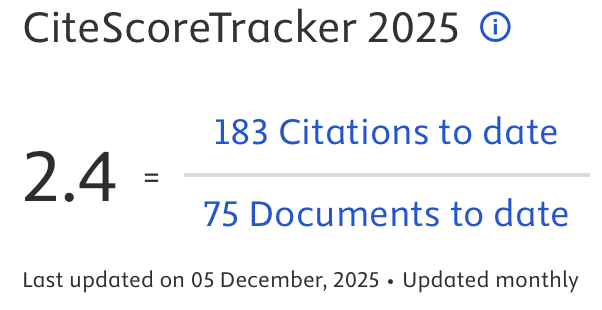Kemunculan Lingua Sacra dalam Sejarah al-Qur’an (Perspektif John Wansbrough)
DOI:
https://doi.org/10.14421/qh.2016.1701-02Abstract
The language of the Qur’an has long been disputed in the history of Qur’anic exegesis. It particularly related to the discourse of Arabic rhetoric and in turn has also sparked a considerable controversy especially in the context of “kalam” sectarianism (madhhab kala>mi>). John Wansbrough, a famous Western scholar, is one of those who paid much attention on the issue in his monumental work, Qur’anic Studies. The work is regarded as one of the exponents of the “historical-critical” study of the Quran that contains several key issues, including the intersection of the Qur’an with Arabic rhetoric discourse, which in turn is also responsible for the emergence of sacred sense in the two domains. Starting with Wansbrough’s key issues on Qur’anic Studies, this article provides a brief introduction to his thought about the emergence of the concept of the sacred language (lingua sacra) in the history of the Qur’an and some of the implications thereof.Keywords: John Wansbrough, lingua sacra, rhetorical exegesis, majaz.
 Abstract viewed: 695 times
|
Abstract viewed: 695 times
|
 PDF downloaded = 827 times
PDF downloaded = 827 times
References
Abu Zayd, Nas}r H}a>mid. Mafhu>m al-Nas}s}: Dira>sat fi ‘Ulu>m al-Qur’a>n. Kairo: al-Hai’at al-Mis}riyyah al-‘Ab. 1990.
Essack, Farid. The Qur’an: A User’s Guide. Oxford: One World. 2007.
Goldziher, Ignaz. “Fik}ih”. dalam B. Lewis, dkk. (ed.). Encyclopedia of Islam. Leiden: Brill. 1991.
Ibn Qutaybah. Ta’wi>l Musykil al-Qur’a>n. Kairo: Dar al-Tura>ts. 1973.
al-Khu>li, Ami>n. Dira>sa>t Isla>miyyah. Kairo: Mat}ba’ah Da>r al-Mis}r. 1996.
Neurwith, Angelika (ed.). The Qur’an in Context. Leiden: Brill. 2010.
Schacht, Joseph. The Origins of Muhammadan Jurisprudence. Oxford: Oxford University Press. 1979.
Shihab, M. Quraish. Kaidah Tafsir. Jakarta: Lentera Hati. 2013.
Umar, Nasaruddin. “Menimbang Hermeneutika Sebagai Manhaj Tafsir”, dalam Jurnal Studi Qur’an, vol. 1 no. 1, 2006.
Wansbrough, John. “Arabic Rethoric and Qur’anic Exegesis”, dalam Bulletin of School of Oriental and African Studies (SOAS), University of London, vol. 31, no. 3, (1968).
---------. “Maja>z al-Qur’an: Periphastic Exegesis”. dalam Bulletin of School of Oriental and African Studies, University of London. Vol. 33. No. 2. (1970).
-------. Qur’anic Studies: Sources and Methods of Scriptural Interpretation. New York: Prometheus Book. 2004.
Downloads
Published
How to Cite
Issue
Section
License
Publishing your paper with Jurnal Studi Ilmu-ilmu al-Qur'an dan Hadis means that the author or authors retain the copyright in the paper. Jurnal Studi Ilmu-ilmu al-Qur'an dan Hadis uses license CC-BY-NC-ND or an equivalent license as the optimal license for the publication, distribution, use, and reuse of scholarly works. This license permits anyone to copy and redistribute the material in any medium or format and must give appropriate credit, provide a link to the license, and indicate if changes were made. If you remix, translate, transform or build upon the material you may use it for private use only and not for distribution. Jurnal Studi Ilmu-ilmu al-Qur'an dan Hadis granted an exclusive non-commercial reuse license by the author(s), but the author(s) are able to put the paper onto a website, distribute it to colleagues, give it to students, use it in your thesis, etc, so long as the use is not directed at a commercial advantage or toward private monetary gain. The author(s) can reuse the figures and tables and other information contained in their paper published by Jurnal Studi Ilmu-ilmu al-Qur'an dan Hadis in future papers or work without having to ask anyone for permission, provided that the figures, tables, or other information that is included in the new paper or work properly references the published paper as the source of the figures, tables or other information, and the new paper or work is not direct at a private monetary gain or commercial advantage.
Jurnal Studi Ilmu-ilmu al-Qur'an dan Hadis journal Open Acces articles are distrubuted under the Creative Commons Attribution-NonCommercial-NoDerivatives 4.0 International (CC BY-NC-ND 4.0). Article can be read, copy and redistribute the material ini any medium or format under the following conditions:
Attribution — You must give appropriate credit, provide a link to the license, and indicate if changes were made. You may do so in any reasonable manner, but not in any way that suggests the licensor endorses you or your use.
NonCommercial — You may not use the material for commercial purposes.
NoDerivatives — If you remix, transform, or build upon the material, you may not distribute the modified material.









